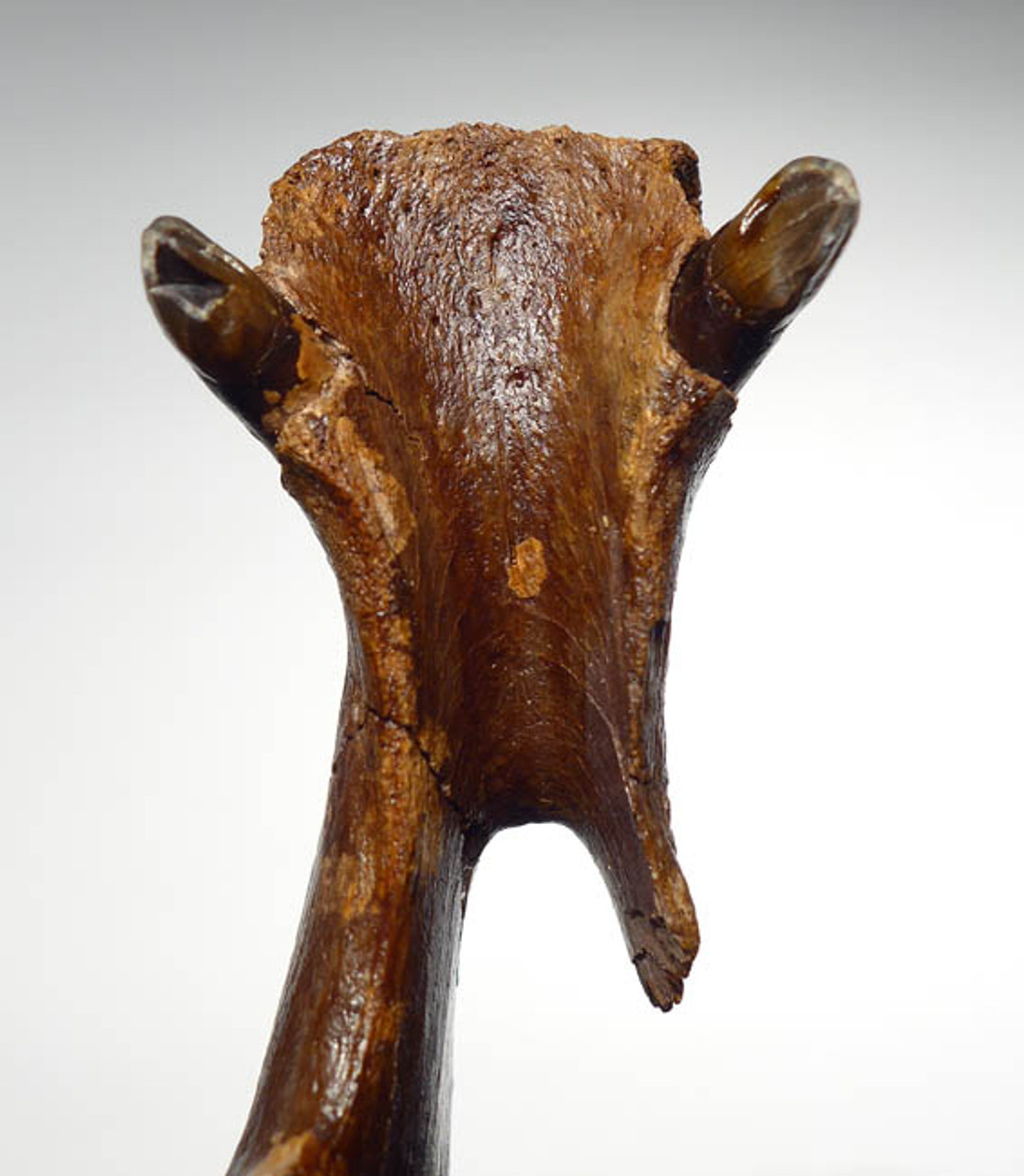Product Description
ITEM #
|
LMX079
|
||
ID
|
Anchippus sp.
|
||
FOUND
|
Dixie Co. - Florida, U.S.A.
|
||
AGE
|
EARLY MIOCENE: 20 million years ago
|
||
SIZE
|
7.75" long
|
||
CONDITION
|
FRACTURE REPAIR BUT NO RESTORATION
|
||
NOTE
|
FARE MORE RARE THAN THE PRICE
|
||
INCLUDES STAND - Actual Item - One Only
Comes with a certificate of authenticity / information sheet |
|||
CLICK HERE TO LEARN MORE ABOUT HORSES
Primitive horse fossils are usually limited to isolated finds of teeth and some bones. This is an extremely rare fossil LEFT MANDIBLE with ALL AUTHENTIC ORIGINAL TEETH (AND EVEN THE CANINE TEETH, and an unbroken symphysis of a primitive three-toed horse species that is seldom found in the North American fossil record - Anchippus sp., a member of the Anchiteridae. This was a three-toed browsing horse that emerged in North America during the Early Miocene. Around 18 million years ago, this species migrated to Europe via the Bering land bridge and subsequently populated Europe. Other than isolated teeth, fossil remains of this species are EXTREMELY RARE. Despite our being based in the center of the continent's richest primitive horse fossil deposits, this if the FIRST TIME we have seen such a fossil. It was reassembled from the original pieces in which it was found but due to its sheer rarity, we opted to keep it in its "scientific grade" form, so that one can exactly see ONLY original fossil, not concealed by any restoration work. Far more rare than many fossil mandibles of various extinct animals, due to the scarcity of these fossils and their diminutive size making them extremely difficult to find.
In North America during the Early Miocene, forests were dwindling and being replaced with grass plains for which this horse was well-suited to feed on the grasses found there. The legs of this horse showed three-toes but the horse was able to stand on its middle toe and its legs were designed for fast running due to longer muscles and fused bones.
This is an especially rare fossil to complete a horse evolution fossil exhibit made up of important, museum-level specimens. This piece is 100% AUTHENTIC WITH REPAIR BUT NO FABRICATION OR COMPOSITING OF TEETH. What is especially rare is the unbroken symphysis and original, unbroken pair of canine teeth that flank the anterior end!
 US DOLLAR
US DOLLAR
 EURO
EURO
 AUSTRALIAN DOLLAR
AUSTRALIAN DOLLAR
 CANADIAN DOLLAR
CANADIAN DOLLAR
 POUND STERLING
POUND STERLING
















